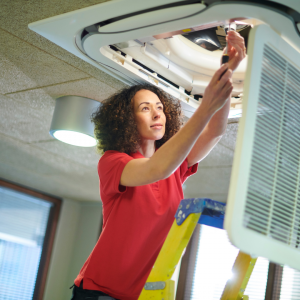A new furnace is a big investment-one that affects your home’s comfort, energy efficiency, and long-term costs. Whether your old system has finally given out or you’re upgrading for better performance, there’s a lot to consider before installing a new unit. Should you go with gas or electric? How do you choose the right size? And most importantly-should you install it yourself or hire a professional?
Choosing the Right Furnace for Your Home
Before you even think about furnace installation Maplewood MN, picking the right furnace is crucial. There’s no one-size-fits-all solution, and the wrong choice can lead to inefficiency, higher bills, and poor heating. Here’s what to consider:
1. Gas vs. Electric: Which One Is Best?
- Gas furnaces – Typically more energy-efficient and cost-effective in the long run, but they require a gas hookup.
- Electric furnaces – Easier to install and often more affordable upfront, but they can be more expensive to run due to electricity costs.
If your home already has a natural gas line, a gas furnace is usually the smarter choice. If not, an electric furnace might be the better option.
2. Size Matters: Getting the Right Capacity
Bigger isn’t always better. A furnace that’s too powerful will short cycle (turn on and off too often), while an undersized unit won’t heat your home properly. A professional HVAC technician will calculate the right size based on your home’s square footage, insulation, and climate.
3. Energy Efficiency and Cost Savings
Look for furnaces with a high Annual Fuel Utilization Efficiency (AFUE) rating. The higher the AFUE, the more efficiently the furnace converts fuel into heat. While high-efficiency models cost more upfront, they save you money over time through lower energy bills.
Why DIY Furnace Installation Is a Bad Idea
Let’s be clear: installing a furnace is not a weekend DIY project. Even if you’re handy around the house, this job involves electrical work, gas lines, venting, and compliance with safety codes. Here’s why it’s best left to the pros:
1. Safety Risks
Furnaces involve gas and electricity-two things that can be extremely dangerous when handled incorrectly. A poor installation could lead to:
- Gas leaks – Natural gas leaks are highly dangerous and can lead to carbon monoxide poisoning.
- Electrical hazards – Incorrect wiring can cause electrical fires or power issues.
- Improper ventilation – Poor venting can allow harmful gases to build up in your home.
2. Code Compliance and Permits
HVAC installations must meet strict building codes, and most locations require permits for new furnace installations. A licensed professional will handle the paperwork and ensure everything is up to code.
3. The Risk of Voiding Your Warranty
Most furnace manufacturers require professional installation to keep the warranty valid. If something goes wrong and you installed it yourself, you could be out of luck when it comes to repairs or replacements.
4. Efficiency and Performance Issues
A poorly installed furnace can lead to:
- Uneven heating
- Increased energy bills
- Frequent breakdowns
Professionals have the experience and tools to ensure your system runs smoothly from day one.
What to Expect During a Professional Furnace Installation
Hiring an expert means you can sit back and relax while they handle everything. Taking assistance from professionals like those at veteranshvac.com, can ensure that your job is done right the first time. Their experience can mean your furnace is installed successfully and safely, providing you with long-term comfort and reliability. Here’s what the process typically looks like:
1. Pre-Installation Assessment
A licensed technician will inspect your home, assess ductwork, and determine the best furnace size and type.
2. Removing the Old Furnace
If you’re replacing an old unit, the crew will safely disconnect and remove it, ensuring proper disposal of old parts.
3. Installing the New Unit
This involves connecting gas lines, wiring, ventilation, and ductwork. Every component needs to be properly sealed and secured for safety and efficiency.
4. Testing and Adjustments
Once installed, the technician will test the system to ensure it runs correctly. This includes checking for leaks, adjusting airflow, and setting the thermostat.
5. Final Walkthrough and Maintenance Tips
Before leaving, the technician will explain how your new furnace works, what maintenance it needs, and how to get the most out of your system.
Tips for Maintaining Your New Furnace
A well-maintained furnace lasts longer and runs more efficiently. Here’s how to keep yours in top shape:
- Change the air filter regularly – A clogged filter reduces efficiency and airflow.
- Schedule annual inspections – A professional tune-up helps catch issues early.
- Keep vents clear – Make sure furniture or debris isn’t blocking airflow.
- Check the thermostat settings – Keeping a steady temperature can improve efficiency.
- Listen for unusual noises – Strange sounds could indicate a problem that needs attention.
Investing in a Professional Furnace Installation Pays Off
Installing a furnace is a job for trained professionals-no exceptions. While it might seem tempting to cut costs with a DIY approach, the risks far outweigh the savings. A properly installed furnace will keep your home warm, safe, and energy-efficient for years to come. When it comes time for a new system, hiring a licensed HVAC technician ensures you get the best performance and peace of mind.




